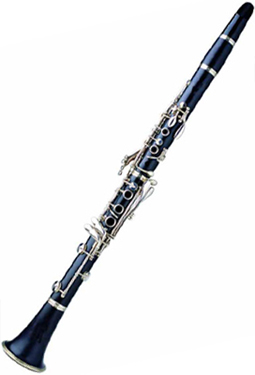Contents:

#1: Clarinet
Important info:
Played by: Wind & Reed
Key: Bb or A (most common keys / transposing)
Clef: Treble
Range:

The clarinet is a very versatile instrument. It is able to play all dynamic ranges from the faintest whisper to very powerful and loud. The range of the instrument is the most consistent out of any of the woodwind section, as well as being one of the most nimble. It is a good Ďall roundí instrument, able to play lyrical and melodic sections as well as running sections and harmonizing with other instruments.
The Bb and A clarinet are the most common of the clarinets and can be used for different reasons. If the music is in a flat key then the Bb is more likely to be used and if the key is a sharp key the A clarinet may be considered over the Bb.
Transposition
The clarinet is a transposing instrument, meaning that when you write for the instrument the note written on the stave is different to the note that youíre hearing. The actual sounding note is a tone lower (for Bb) or and minor third lower (for A) than whatís written. The key signature must also change to compensate, it needs to be raised up a tone (for Bb) and up a minor third (for A) from the concert key, for example, if the concert pitch instruments are playing in the key of C, then the clarinet must play in the key of D (for Bb) and Eb (for A). Back to top
Trills & Tremolos
With the clarinet being very versatile, there are really no limitations on trills or tremolos, there is always a way to perform them. Obviously the larger the interval the more difficult it becomes to play, nevertheless, they are all potential playable. Back to top